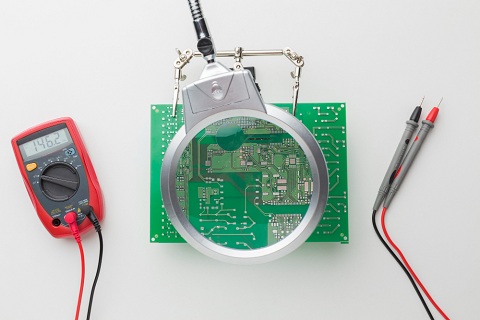The Ramblers Reach Outpost Electric Puzzle has piqued the interest of many adventurers. This intricate puzzle, located in one of the most scenic parts of the outpost, requires both keen observation and strategic thinking to solve. In this guide, we will delve deeply into the various aspects of the puzzle, providing you with a detailed walkthrough to ensure you can solve it efficiently.
Understanding the Puzzle Layout
The Ramblers Reach Outpost Electric Puzzle is designed to test your problem-solving skills. The layout consists of a series of interconnected electric nodes that must be activated in the correct sequence. Each node is connected by a series of wires, some of which may be broken or require specific triggers to function.
Key Components of the Puzzle
- Electric Nodes: These are the primary elements you need to interact with. Each node can be in an active or inactive state.
- Connecting Wires: These wires link the nodes and are crucial in determining the flow of electricity.
- Power Sources: These are the origins of the electrical current. Properly routing the power from these sources to the nodes is essential.
- Switches and Levers: These mechanisms control the flow of electricity, allowing you to redirect power as needed.
Step-by-Step Walkthrough
Step 1: Initial Assessment
Begin by surveying the entire puzzle layout. Identify all the nodes, switches, and power sources. Take note of any broken wires or obstacles that might impede the flow of electricity.
Step 2: Activating the Primary Power Source
Locate the primary power source and activate it. This initial activation will provide the necessary current to start solving the puzzle. Ensure that the power source is functioning correctly and that the electricity is flowing towards the first set of nodes.
Step 3: Sequential Activation of Nodes
The key to solving the Ramblers Reach Outpost Electric Puzzle lies in the correct sequence of node activations. Follow these steps:
- Node A: Activate the switch leading to Node A. Ensure that the connecting wire is intact and that Node A becomes active.
- Node B: Once Node A is active, proceed to Node B. Use the corresponding switch or lever to redirect power from Node A to Node B.
- Node C: Check the wire connecting Node B to Node C. If it’s broken, find the repair mechanism. Activate Node C by redirecting power from Node B.
Step 4: Managing Broken Wires
Broken wires are a common obstacle. To manage them:
- Identify the Break: Locate where the wire is broken.
- Repair Mechanism: Find the repair mechanism, usually a switch or a lever, that can bypass the broken section.
- Redirect Power: Use the repair mechanism to redirect power around the broken section.
Step 5: Utilizing Switches and Levers
Switches and levers play a crucial role in controlling the flow of electricity. Here’s how to use them effectively:
- Toggle Switches: These can change the direction of the current. Use them to redirect power from one node to another.
- Levers: Often, levers will activate secondary power sources or repair mechanisms. Pull the levers in the correct sequence to ensure a continuous flow of electricity.
Step 6: Final Node Activation
After successfully routing power through the primary nodes, focus on the final nodes. These nodes often require a combination of the main power source and any secondary sources activated by levers.
- Final Node Sequence: Follow the established path of active nodes to the final destination.
- Verify Connections: Ensure all wires are intact and that no switches need to be toggled again.
- Activate Final Node: Redirect the power to the final node to complete the puzzle.
Common Issues and Troubleshooting

Inconsistent Power Flow
If the power flow seems inconsistent, double-check all connections. A common issue is a partially broken wire or a switch not fully toggled.
Non-Responsive Nodes
If a node doesn’t respond, it could be due to a hidden switch or lever. Retrace your steps to ensure all necessary mechanisms have been activated.
Overloaded Circuits
Sometimes circuits can become overloaded. This happens if too many nodes are active simultaneously. Deactivate some nodes to reduce the load and try again.
Tips for Efficient Puzzle Solving
- Plan Ahead: Before making any moves, plan your route and understand the sequence.
- Patience and Precision: Rushing through the puzzle can lead to mistakes. Take your time to ensure each step is correct.
- Document Your Progress: Keep a note of which nodes and switches have been activated. This can help if you need to backtrack.
FAQs About Ramblers Reach Outpost Electric Puzzle
For beginners, starting with a clear understanding of the basic components and their functions is crucial. Breaking the puzzle into smaller, manageable sections can also help make the process less overwhelming.
While not always necessary, a multimeter can be very helpful for checking connections and ensuring the correct flow of electricity.
The time required to solve the puzzle can vary widely depending on the difficulty level and the solver’s experience. It can range from a few hours to several days.
Yes, solving the puzzle as a group can be a fun and collaborative experience. It allows for sharing ideas and strategies, which can be particularly useful for more complex puzzles.
Electric puzzles can often be found in educational stores, specialty puzzle shops, and online marketplaces. Additionally, many puzzle communities and forums share information about new and interesting puzzles.
Conclusion
The Ramblers Reach Outpost Electric Puzzle is a challenging yet rewarding task. By following this comprehensive guide, you’ll be equipped with the knowledge and strategies needed to solve it efficiently. Remember to approach each step methodically, and don’t hesitate to troubleshoot common issues as they arise.

